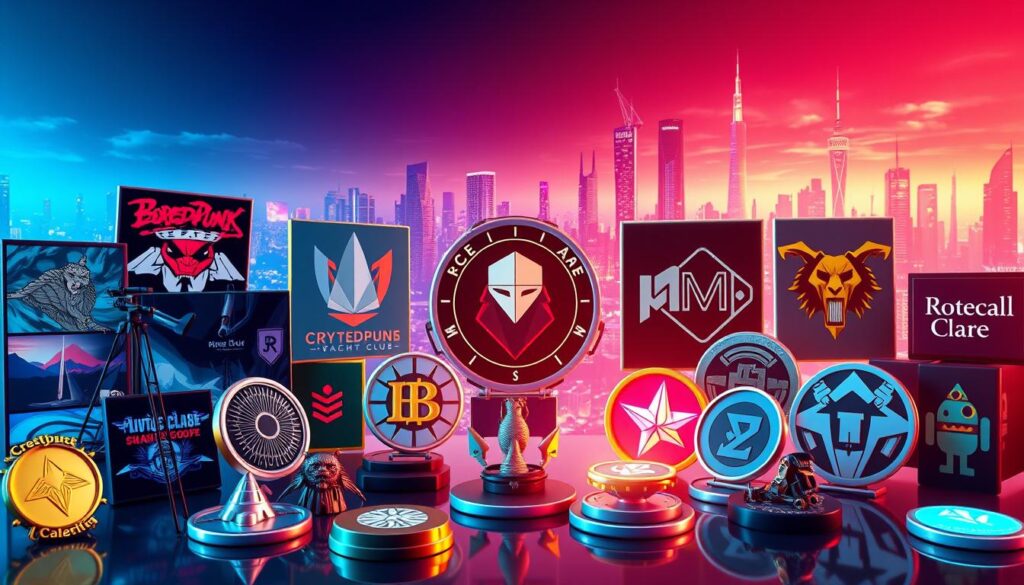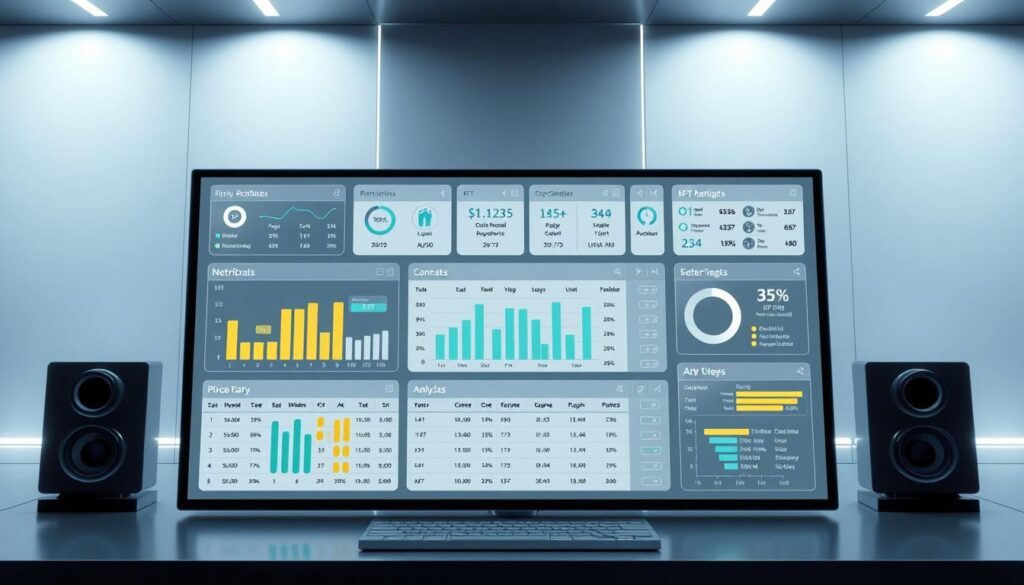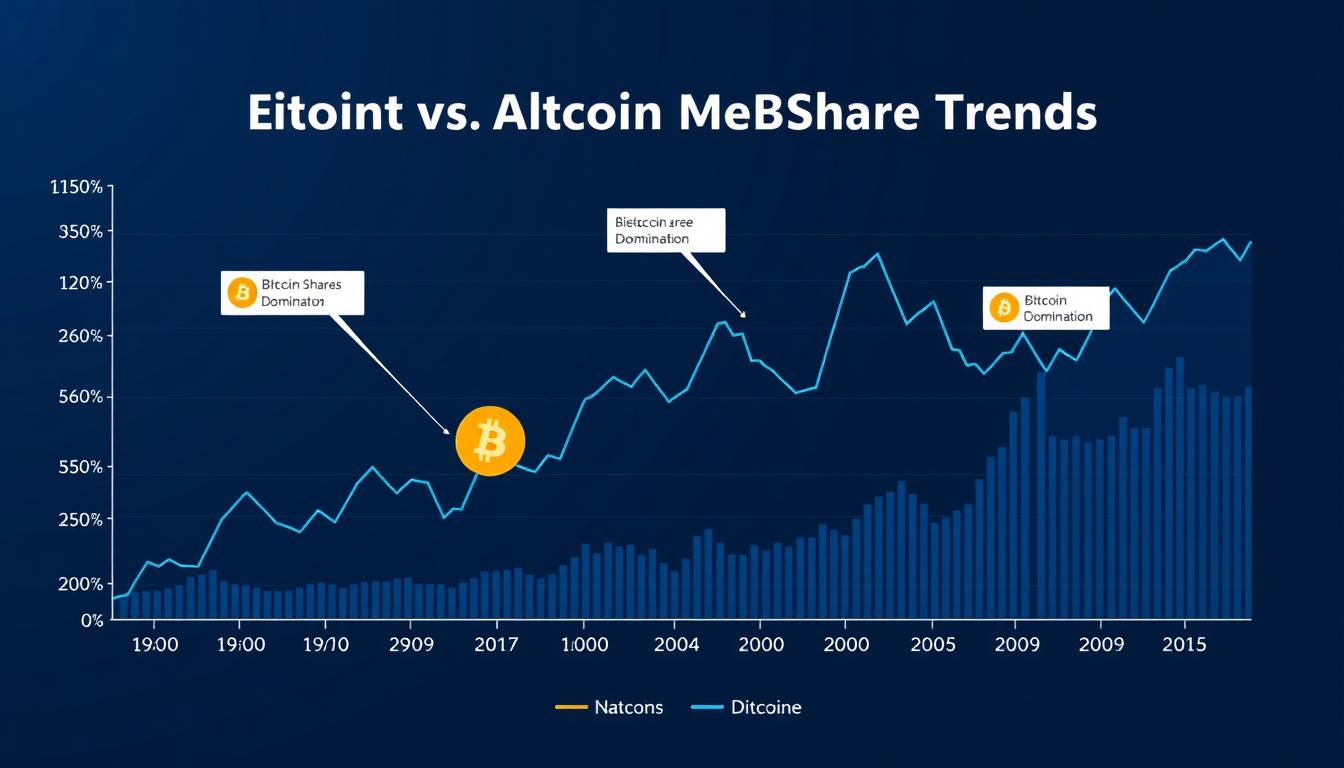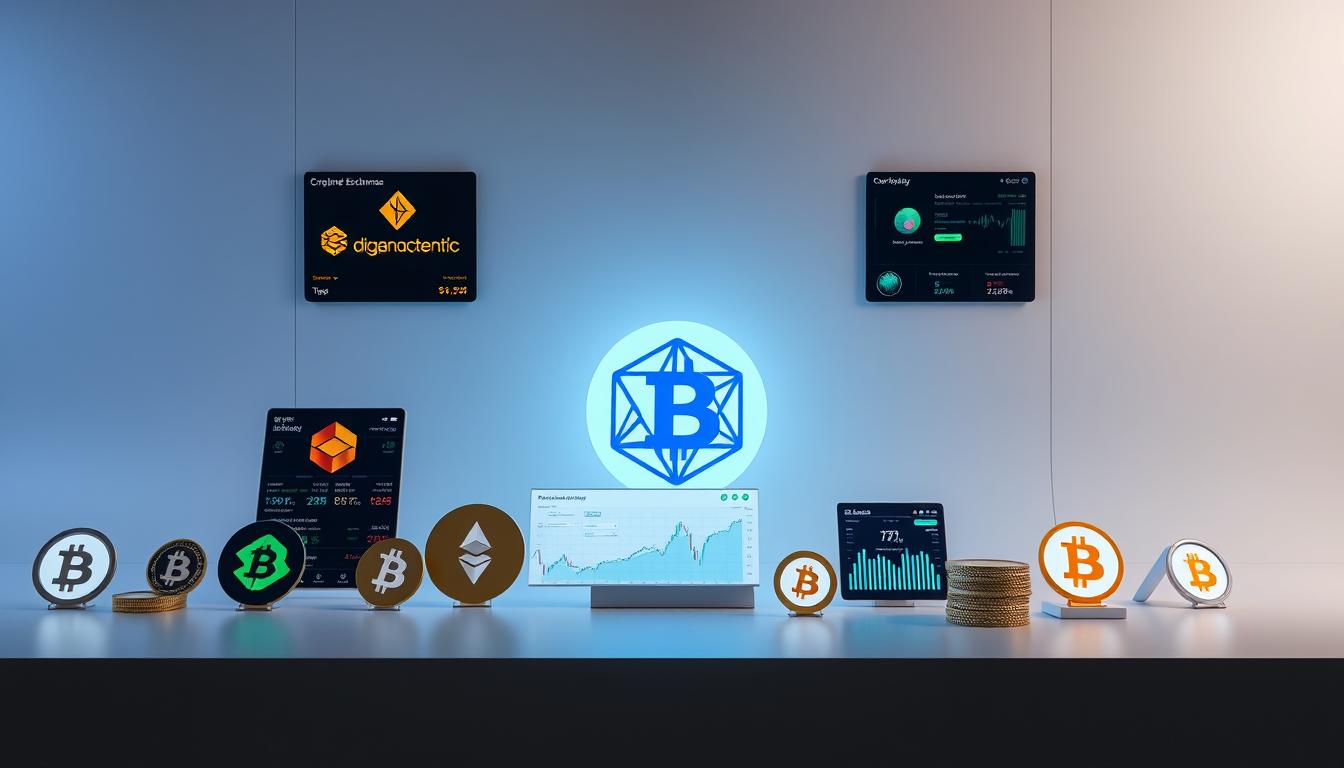Now Reading: Cross Chain NFT Interoperability Bridge Protocols Ethereum Polygon Solana
- 01
Cross Chain NFT Interoperability Bridge Protocols Ethereum Polygon Solana
Cross Chain NFT Interoperability Bridge Protocols Ethereum Polygon Solana
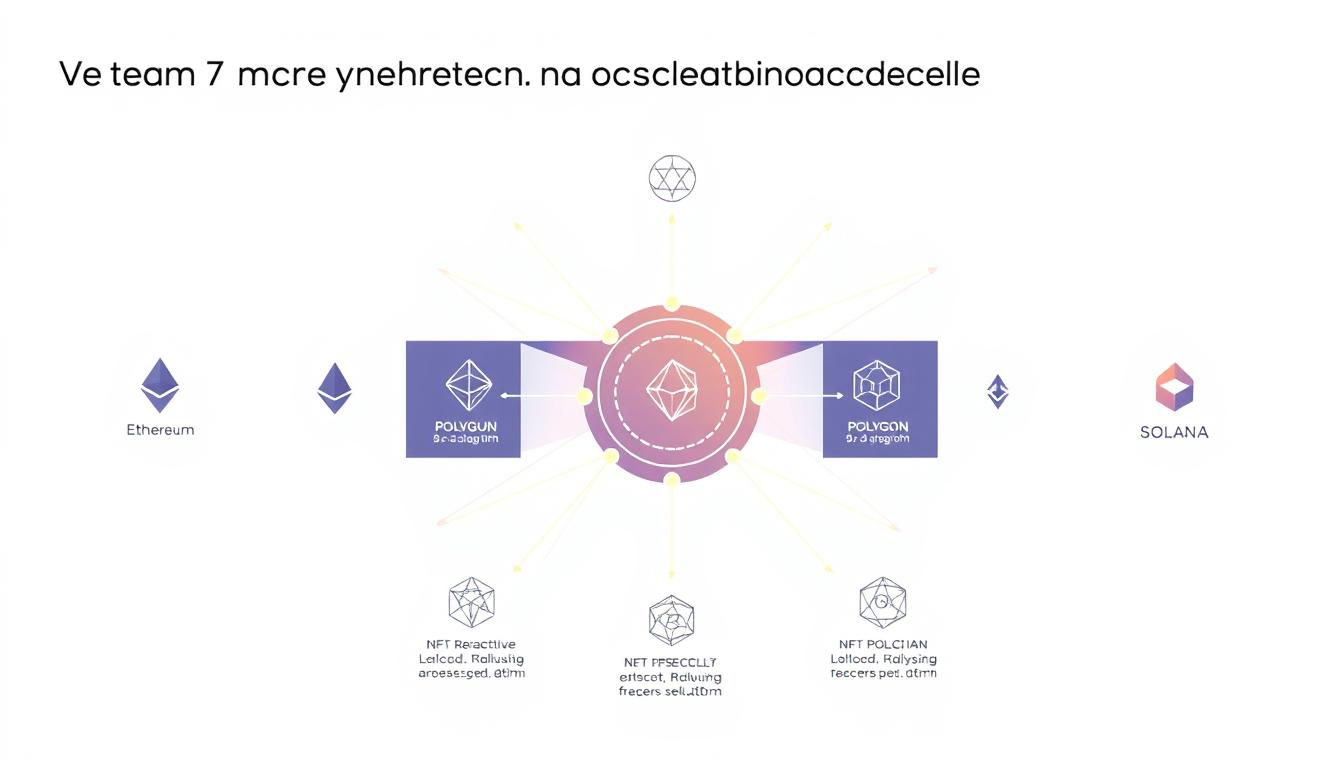
Modern blockchain ecosystems are transforming how creators and collectors interact with digital items. Advanced systems now enable smooth transfers between different platforms, overcoming previous limitations that kept assets isolated. This innovation unlocks new possibilities for decentralized applications and marketplaces.
These solutions rely on smart contracts to verify transactions across separate environments. Validator networks add security layers while maintaining transaction speed. What began as basic token exchanges has evolved into sophisticated methods for moving complex digital collectibles.
Three major platforms demonstrate unique strengths in this space. One offers extensive developer tools, another prioritizes low-cost transactions, while a third focuses on ultra-fast processing. Understanding their differences helps users optimize transfers based on specific needs like security requirements or budget considerations.
Key Takeaways
- Modern systems overcome historical barriers between isolated platforms
- Smart contracts and validator teams ensure secure transactions
- Complex digital collectibles now move as easily as basic tokens
- Platforms vary in strengths like cost efficiency and processing speed
- Users can choose solutions matching their security and budget needs
Introduction to Cross Chain NFT Interoperability
Digital collectibles once faced a peculiar problem – they couldn’t leave their home networks. Creators found their artwork stuck in closed environments, while collectors faced limited trading options. This changed when new connection tools emerged, letting unique items roam across previously isolated spaces.
The Evolution of NFT Bridges in Blockchain
Early systems treated digital art like basic tokens. Moving them required burning assets on one chain and minting copies elsewhere. This clunky process couldn’t handle unique IDs or artwork details. Modern bridges changed the game. They now lock originals in secure vaults, mint mirror versions on foreign chains, and track ownership through smart contracts.
These systems preserve what makes each item special. A gaming sword keeps its damage stats. A painting retains its color mix. Even complex utilities in smart contracts stay operational during transfers. This shift turned bridges from simple transporters to full-featured moving services for digital valuables.
Understanding the Relevance for DeFi and Digital Assets
Decentralized finance thrives when assets flow freely. Bridges let collateral cross networks – a Bitcoin-backed NFT could secure a loan on another chain. This creates new lending markets without middlemen. Users also avoid being trapped by high fees or slow transactions on single networks.
As more chains emerge, bridges become essential navigation tools. They turn fragmented markets into connected economies. For creators, this means reaching wider audiences. For collectors, it means trading rare items across traditional borders. The result? A richer, more dynamic digital economy.
The Role of Crypto Bridges in Enhancing Interoperability
Crypto bridges act as vital connectors between separate blockchain environments. These systems let users move digital goods and data between platforms that weren’t designed to interact. Like train tracks linking distant cities, they create pathways for assets to travel securely.

What Are Crypto Bridges?
These tools function as portals between different ecosystems. Some only let you send assets one way—like a highway with no return route. Others support two-way traffic, letting items flow back and forth. For example, a crypto bridge might lock a token on its home network and create a mirrored version elsewhere. This synthetic version matches the original’s value but works on new terrain.
How Bridges Enable Cross-Chain Communication
Validators monitor transactions on both sides of the bridge. When someone initiates a transfer, smart contracts lock the asset and mint its adapted form elsewhere. This process keeps the item’s core value intact while making it usable in foreign networks. It’s like changing a book’s language without altering its story.
Advanced bridges now handle complex data, not just simple tokens. They carry ownership details, smart contract terms, and even voting rights. This lets users tap into multiple networks’ strengths without being stuck in one system. The result? A fluid space where ideas and tools move without barriers.
Exploring cross chain NFT interoperability bridge protocols ethereum polygon solana
Leading platforms now enable seamless movement of unique digital assets across major ecosystems. This multi-network environment lets creators and traders access specialized features from different systems simultaneously. Advanced connection tools maintain asset integrity while expanding market reach.

Overview of Key Protocols
Modern solutions like Portal (formerly Wormhole) demonstrate how decentralized systems can link diverse networks. Its guardian network monitors transactions across 20+ ecosystems, ensuring secure transfers between major platforms. This approach preserves unique asset properties while enabling new cross-chain compatibility opportunities.
Comparative Analysis Across Blockchains
Different networks prioritize distinct advantages for digital collectibles:
| Platform | Focus | Transaction Speed | Cost Per Transfer |
|---|---|---|---|
| Ethereum-based | Security & Decentralization | Moderate | Higher |
| Polygon | Affordability | Fast | Low |
| Solana | High-Speed Processing | Instant | Minimal |
Ethereum’s strength lies in its battle-tested smart contract system. Polygon reduces fees through layered architecture, while Solana’s unique consensus enables rapid transfers. These complementary features let users choose optimal paths for different transaction types.
Emerging tools combine validator networks with chain-specific architectures. This hybrid approach balances speed and security, creating robust pathways for valuable digital items. As ecosystems grow, these connections become vital infrastructure for decentralized markets.
Deep Dive into Popular Bridge Platforms
Innovative transfer solutions are redefining asset mobility across digital ledgers. Three platforms stand out for their distinct approaches to moving value between networks. Each offers unique benefits tailored to different priorities like cost efficiency, security, or ecosystem integration.

Portal Token Bridge and Its Network Expansion
Portal Token Bridge dominates with its ultra-low $0.0001 transfer fee and support for 20+ networks. Its guardian system uses decentralized validators to secure $3.5 billion in locked assets. Over 400,000 transactions demonstrate growing trust in its upgraded security framework.
Binance Bridge, Avalanche Bridge, and Beyond
Binance Bridge simplifies conversions for ERC-20 tokens and major coins like XRP and DOT. Users pay only network fees, making it cost-effective for frequent movers. Its tight integration with Binance’s ecosystem appeals to active traders.
Avalanche Bridge employs a multi-step verification process involving four security firms. This approach safeguards $5 billion in assets during two-way transfers between Ethereum and its native network. The voting system adds delays but prevents unauthorized transactions.
| Platform | Transaction Fee | TVL | Security Model |
|---|---|---|---|
| Portal | $0.0001 | $3.5B | Decentralized Guardians |
| Binance | Network Fees Only | N/A | Centralized Verification |
| Avalanche | Variable Gas | $5B | Multi-Relayer Consensus |
Recent transaction statistics show increasing adoption of these tools. While Portal attracts budget-conscious users, Avalanche appeals to security-focused institutions. Binance remains popular for its seamless exchange connectivity.
Security, Scalability, and Decentralization in NFT Bridges
Protecting digital asset transfers between networks remains a critical challenge. Complex systems connecting different ledgers face unique risks due to varying technical frameworks. These challenges demand innovative approaches to safeguard user investments.

Addressing Bridge Vulnerabilities and Hacks
Recent incidents reveal systemic weaknesses in asset transfer systems. The Ronin network breach exploited centralized validator nodes, allowing attackers to drain $625 million. Similar attacks targeted other platforms through forged signatures and smart contract flaws.
Three key issues enable these exploits:
- Overlapping codebases between incompatible networks
- Centralized control points in validation processes
- Delayed response mechanisms during active attacks
Implementing Decentralized Security Models
New protection frameworks distribute authority across multiple parties. Multi-signature requirements and time-delayed transactions prevent single-point failures. Automated monitoring systems now freeze suspicious activity within seconds.
Decentralized validator networks using diverse consensus methods prove most effective. These systems combine:
- Independent security audits from competing firms
- Real-time transaction anomaly detection
- Community-governed emergency protocols
Such measures help balance safety with operational speed. Users benefit from robust protection without sacrificing transfer efficiency across networks.
Interoperability Benefits for NFT Assets and Smart Contracts
The ability to move digital valuables between separate networks reshapes how creators and collectors unlock value. Interconnected systems now enable complex financial operations while preserving unique item properties. This evolution extends far beyond basic trading scenarios.
Enhanced Asset Transfer Efficiency
Modern protocols maintain metadata integrity during transfers through adaptive encoding systems. A digital painting keeps its artist signatures, while gaming items retain battle stats. This technical precision ensures assets function identically across different environments.
Speed improvements come from parallel processing architectures. Systems handle multiple verification steps simultaneously rather than sequentially. Users experience near-instant settlements even for high-value collectibles.
Smart Contract Integration and ERC-20 Considerations
Hybrid applications merge utility features from multiple networks. A loyalty program might use one chain’s storage capabilities with another’s payment infrastructure. Smart contracts orchestrate these interactions seamlessly.
ERC-20 compatibility becomes crucial when handling fractional ownership models. Bridges must translate token standards without altering economic parameters. This dual functionality supports emerging use cases like shared artwork ownership across ecosystems.
These technical advancements create symbiotic relationships between networks. As systems grow more interdependent, users gain unprecedented flexibility in managing digital valuables. The future lies in specialized solutions that balance technical rigor with creative possibilities.
FAQ
How do crypto bridges handle security risks during asset transfers?
Platforms like Binance Bridge and Avalanche Bridge use multi-signature wallets, audits, and decentralized validation to minimize vulnerabilities. Protocols often lock original assets on the source network while minting wrapped tokens on the destination chain, ensuring 1:1 collateralization.
What role do smart contracts play in cross-network transactions?
Smart contracts automate asset transfers between networks like Ethereum and Solana. They enforce rules for minting or burning wrapped tokens, verify transactions, and integrate with decentralized applications (dApps) to enable features like staking or liquidity pooling.
Which blockchains support ERC-20 token transfers via bridges?
Ethereum Virtual Machine (EVM)-compatible networks like Polygon and Avalanche natively support ERC-20 transfers. Non-EVM chains like Solana require bridges to convert tokens into compatible formats, often using intermediate protocols for seamless interoperability.
How long do cross-chain transfers typically take?
Transfer times vary by network congestion and validation mechanisms. EVM-based bridges often process transactions in minutes, while chains with unique consensus models might take longer. Platforms like Portal Token Bridge optimize speed through parallel processing.
Can decentralized finance (DeFi) platforms leverage multiple bridges simultaneously?
Yes, advanced DeFi ecosystems aggregate liquidity from bridges like Binance Bridge and Polygon’s PoS Bridge. This multi-bridge approach reduces slippage and improves asset availability for trading, lending, or yield farming across networks.
What distinguishes wrapped tokens from native assets in transfers?
Wrapped tokens are pegged 1:1 to original assets but exist as synthetic versions on foreign networks. For example, transferring ETH to Solana via a bridge creates wrapped ETH (wETH), which interacts with Solana’s runtime environment while remaining redeemable for the base asset.
How do developers choose between bridges for specific use cases?
Factors include supported networks (e.g., Ethereum vs. Solana), transaction fees, finality speed, and security models. Projects prioritizing decentralization might opt for trustless bridges, while enterprise users could prefer institutional-grade platforms like Binance Bridge for higher throughput.


